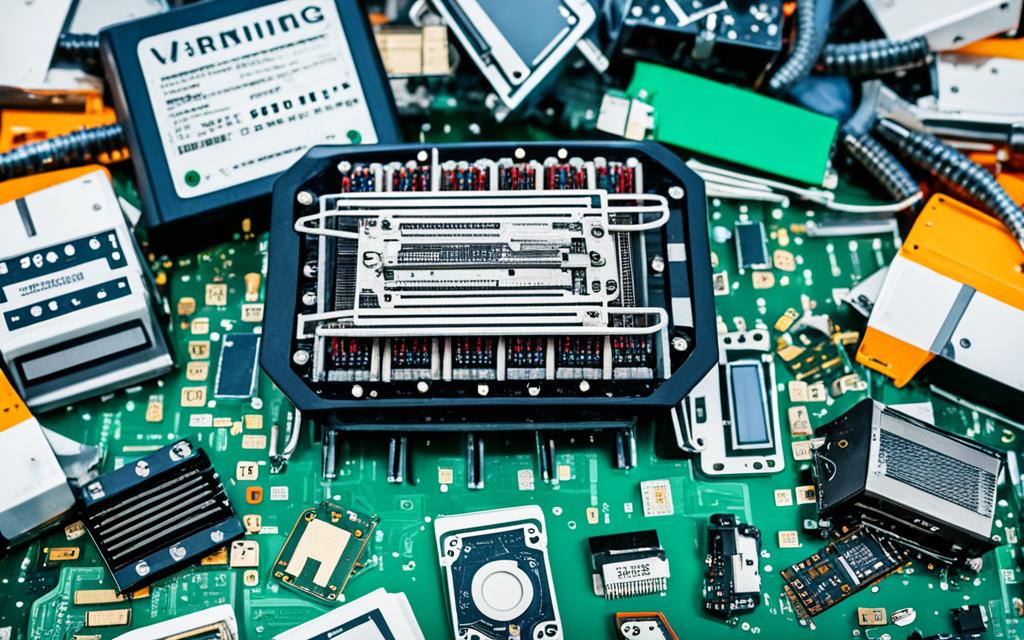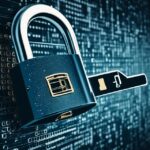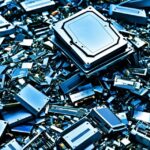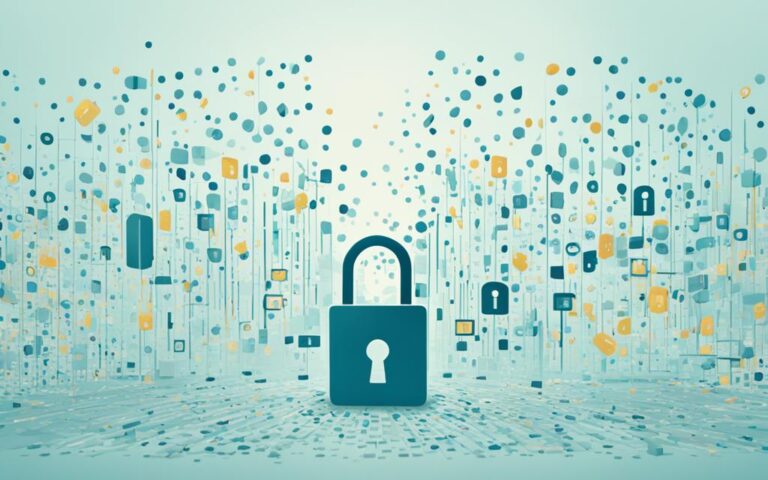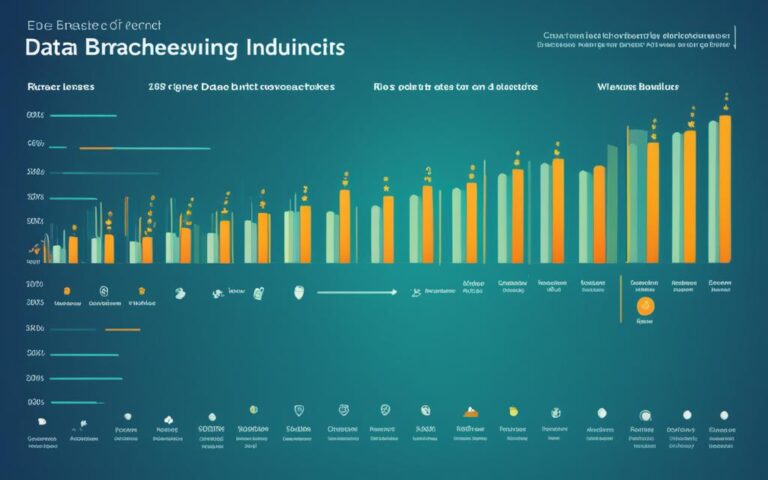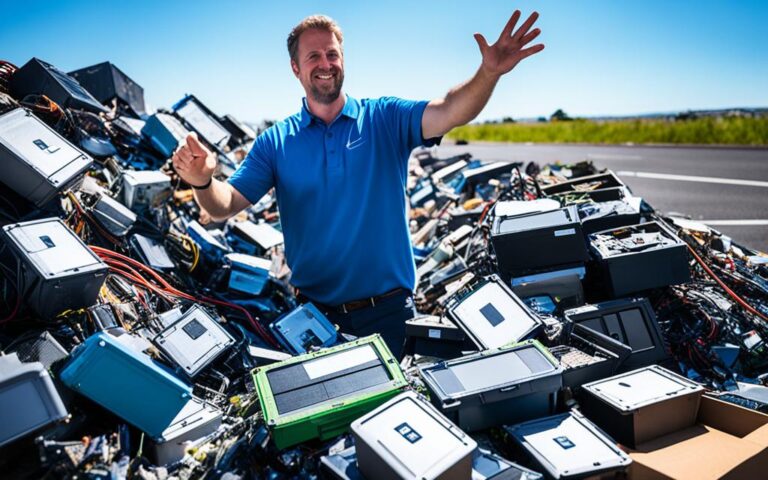Secure Disposal of Data in a World of Ever-Changing Technology
In today’s rapidly evolving digital landscape, ensuring the secure disposal of data has become a paramount concern. With constant advancements in technology and the increasing threat of data breaches, it is essential to protect personal and business data from falling into the wrong hands.
Data breaches can have severe consequences, including financial loss, reputational damage, and legal liabilities. Therefore, individuals and organizations must adapt their IT asset management strategies to prioritize security, efficiency, and sustainability.
Effective data disposal involves more than simply deleting files or formatting hard drives. It requires comprehensive processes and best practices that safeguard sensitive information and adhere to regulatory standards.
Whether you are disposing of old hardware or transitioning to new technology, it is crucial to follow secure data disposal protocols. This includes securely wiping data from devices, physically destroying storage media, and ensuring proper disposal and recycling.
In the following sections, we will explore the challenges of secure data disposal, the evolution of data destruction methods, best practices for hardware disposal, the shift in end-of-life and IT lifecycle management, the advantages of Phiston’s data destruction solutions, and the importance of environmental and data security compliant IT disposal.
By understanding these key aspects and implementing appropriate measures, individuals and organizations can safeguard their data and mitigate the risks associated with data breaches.
The Evolution of Data Destruction Methods
When it comes to data security, the importance of proper data destruction and sanitization cannot be emphasized enough. The rapid advancement of technology has necessitated the evolution of data destruction methods to keep up with the ever-changing landscape. In this section, we will explore the traditional methods of data destruction, their decline in popularity, and the emergence of more efficient and secure approaches.
The Traditional Approach: Physically Destroying Hard Drives On-Site
In the past, the most common method of data destruction involved physically destroying hard drives on-site. This method, while effective in ensuring data confidentiality, posed various challenges and drawbacks.
- Labor and Time-Intensive: Physically destroying hard drives required significant labor and time investment, especially in large-scale environments with numerous drives to dispose of.
- Costly: The traditional approach often incurred high costs due to the need for specialized equipment and trained personnel to carry out the destruction process.
- Inefficient: Physical destruction on-site hindered scalability and efficiency, resulting in a time-consuming process that could not keep up with the increasing volume of data storage media that required destruction.
- Environmental Impact: The disposal of physically destroyed hardware posed environmental concerns, as it often involved the improper disposal of electronic waste.
The Shift Towards Off-Site Destruction and Evolving Methods
“The shift towards off-site destruction and the adoption of evolving methods have revolutionized the data destruction landscape, addressing the limitations of traditional approaches and offering a more efficient, cost-effective, and environmentally friendly solution.”
Recognizing the drawbacks of on-site destruction, organizations have increasingly shifted towards off-site destruction services provided by certified vendors. This has brought about several benefits and advancements in data destruction methods:
- Efficiency: Off-site destruction allows for the simultaneous destruction of a large number of drives, significantly reducing the time required for the process.
- Cost-Effectiveness: By outsourcing data destruction to specialized vendors, organizations can avoid the need for expensive equipment and personnel, resulting in cost savings.
- Environmental Friendliness: Certified vendors adhere to strict environmental standards and regulations, ensuring proper recycling and disposal of electronic waste in compliance with WEEE (Waste Electrical and Electronic Equipment) directives.
In recent years, the focus has shifted towards software-based data destruction methods. These methods rely on advanced algorithms and techniques to securely and permanently remove sensitive data from storage media. Using specialized software, data sanitization can be carried out in a controlled and systematic manner, ensuring comprehensive data erasure that is extremely difficult to recover.
| Traditional Methods | Evolving Methods |
|---|---|
| Physically destroying hard drives on-site | Off-site destruction services |
| Labor and time-intensive | Efficient and scalable |
| Costly | Cost-effective outsourcing |
| Inefficient | Advanced software-based methods |
| Environmental impact | Environmentally friendly |
This shift towards off-site destruction and software-based methods has brought about significant improvements in data destruction practices. Organizations now have access to more efficient, cost-effective, and environmentally conscious options to ensure the secure disposal of their data storage media.
Best Practices for Secure Hardware Disposal
In this section, we will discuss the best practices for secure hardware disposal, focusing on data wiping, MDM, asset management, and managing broken devices. These practices ensure that sensitive information is protected and prevent unauthorized data access or breaches.
Data Wiping:
Before handing over devices to a recycling vendor, it is crucial to perform data wiping to remove all sensitive information. Data wiping ensures that the data is permanently erased and cannot be recovered. There are two options for data wiping:
- MDM (Mobile Device Management): MDM solutions provide a secure way to wipe data remotely from devices. This method is convenient for organizations managing multiple devices.
- Manual Data Wiping: If MDM is not available, manual data wiping can be performed using specialized software tools. This process involves overwriting the device’s storage with random data to ensure data destruction.
Enrollment in MDM Program:
It is recommended to keep devices enrolled in the MDM program until the recycling vendor provides an initial serialized report of the received assets. This ensures that devices are trackable, and their data security can be verified throughout the disposal process.
Comprehensive Asset List:
Preparing a comprehensive list of all assets being given to the recycling vendor is essential. This list should include details such as device type, serial numbers, and any associated accessories. A well-documented asset list enables better tracking and management of devices, reducing the risk of data breaches.
Managing Broken Devices:
Broken devices that cannot be repaired should be managed with extra care. These devices may still contain sensitive data that could be accessed if not disposed of properly. It is advisable to securely store broken devices until they can be properly disposed of through a reputable recycling vendor.
By following these best practices for secure hardware disposal, individuals and organizations can mitigate the risk of data breaches and ensure the protection of sensitive information.
The Shift in End-of-Life & IT Lifecycle Management
In the past decade, there has been a significant shift in end-of-life processes and IT lifecycle management. The traditional approach, which involved working with desktop computers in an on-premises environment, has given way to a more modern approach that embraces remote and hybrid work using laptops in a cloud environment.
Asset management has also undergone changes as organizations adapt to the evolving landscape. With the traditional approach, asset management was centered around physical assets located within the office premises. However, in the modern approach, asset management extends to remote employees and their devices, requiring efficient systems for device retrieval, management, and secure data disposal.
The hardware refresh cycle has also been affected by this shift. In the traditional approach, desktop computers were typically replaced every few years. However, with the modern approach, where laptops are the primary devices, the refresh cycle has become more frequent to keep up with technological advancements and ensure optimal performance for remote workers.
To better illustrate the differences between the traditional and modern approaches to end-of-life and IT lifecycle management, let’s take a look at the following comparison:
| Traditional Approach | Modern Approach |
|---|---|
| On-premises desktop computers | Laptops in a cloud environment |
| Asset management focused on office premises | Extended asset management to remote employees |
| Longer hardware refresh cycles | More frequent hardware refresh cycles |
As organizations adapt to this shift, it becomes crucial to ensure the proper management of end-of-life processes and the secure disposal of IT assets. Implementing a comprehensive IT lifecycle management strategy that addresses the challenges and opportunities of the modern approach is essential for data security and overall organizational efficiency.
By embracing the modern approach to end-of-life processes and IT lifecycle management, organizations can stay ahead of the curve and effectively manage their IT assets while ensuring the secure disposal of sensitive data.
The Advantages of Phiston’s Data Destruction Solutions
In today’s data-driven world, ensuring the secure disposal of sensitive information is paramount. Phiston, a leading provider of data destruction solutions, offers a range of innovative products designed to meet the stringent demands of modern businesses. With their cutting-edge technologies and commitment to regulatory standards, Phiston provides reliable and efficient solutions for data destruction.
Phiston’s data destruction solutions are specifically designed to effectively destroy various types of data storage media. Whether it’s hard disk drives (HDDs), solid-state drives (SSDs), laptops, flash drives, or other digital media, Phiston has the tools to securely and permanently eliminate any trace of sensitive data.
Innovative Technologies for Secure Data Destruction
Phiston’s media destroyers employ advanced technologies to ensure maximum security during the data destruction process. Their solutions utilize techniques such as degaussing, shredding, and crushing to eliminate data and make it irretrievable.
“We have been using Phiston’s media destroyers for several years now, and we are extremely satisfied with the results. The level of security provided by their products is unmatched, and their commitment to workplace safety is evident in their design and operation.”
John Smith, IT Manager at XYZ Corporation
Aside from their effectiveness, Phiston’s data destruction solutions prioritize workplace safety. These devices are equipped with safety features such as interlock systems, emergency stop buttons, and secure waste containment to minimize risks and protect employees.
Compliance with Regulatory Standards
Ensuring compliance with regulatory standards is crucial for businesses in all industries. Phiston understands the importance of meeting these requirements and offers solutions that adhere to various regulations, including GDPR, HIPAA, and FACTA.
By using Phiston’s data destruction solutions, businesses can confidently protect themselves against potential legal consequences and reputational damage resulting from non-compliance.
Performance, Compactness, and Ease of Operation
Phiston’s data destruction solutions excel in terms of performance, compactness, and ease of operation. Their devices are designed to maximize efficiency while minimizing the space needed for operation.
With intuitive user interfaces and straightforward operation, Phiston’s solutions eliminate the need for extensive training, allowing users to quickly and seamlessly integrate them into their data destruction processes.
Phiston’s data destruction solutions offer a comprehensive and reliable approach to safeguarding sensitive information. Whether it’s protecting customer data, intellectual property, or confidential business records, Phiston’s cutting-edge technologies, commitment to regulatory standards, and focus on workplace safety make them a preferred choice for businesses seeking high-security data destruction solutions.
Environmental & Data Security Compliant IT Disposal
In today’s digital era, proper IT disposal is essential for both environmental sustainability and data security. Compliance with regulatory standards such as WEEE (Waste Electrical and Electronic Equipment) and GDPR (General Data Protection Regulation) is crucial to ensure the responsible handling and disposal of electronic waste and the protection of sensitive information. By choosing an ICO accredited IT disposal company, businesses and individuals can effectively manage their IT asset end-of-life processes.
The Importance of WEEE and GDPR Compliance
Compliance with WEEE and GDPR standards is crucial for sustainable and secure IT disposal. WEEE regulations aim to minimize the negative impact of e-waste on the environment and human health by promoting responsible disposal and recycling of electronic equipment. GDPR regulations, on the other hand, focus on protecting personal data and ensuring that it is handled securely throughout its lifecycle.
By choosing an IT disposal provider that adheres to these standards, organizations can minimize their environmental footprint and mitigate the risk of data breaches and non-compliance penalties.
Services Offered by IT Disposal Companies
ICO accredited IT disposal companies offer a range of services to ensure proper handling and disposal of IT assets. These services include:
- Certified data destruction: Secure data sanitization techniques are employed to permanently erase data from storage devices, ensuring that no sensitive information can be recovered.
- Secure storage: IT disposal companies provide secure facilities to store decommissioned assets until they are securely destroyed or repurposed.
- Onsite/offsite destruction options: Depending on the client’s requirements, IT disposal companies offer both onsite and offsite destruction options to provide flexibility and convenience.
Bespoke Extras for Enhanced Security
Many IT disposal companies go the extra mile to ensure transparency and added security throughout the disposal process. Some of the bespoke extras offered include:
- Video footage of the destruction process: This provides visual evidence of the destruction, giving clients peace of mind that their data has been securely destroyed.
- Pre-destruction inventory reports: These reports provide a comprehensive list of all assets being disposed of, ensuring accurate record-keeping and accountability.
By choosing an IT disposal company that offers these additional services, businesses can enhance their data security practices and meet their compliance obligations.
| Benefits of Environmental & Data Security Compliant IT Disposal | |
|---|---|
| Environmental Sustainability | Data Security and Compliance |
| Proper disposal and recycling of e-waste | Protection of sensitive information |
| Compliance with WEEE regulations | Compliance with GDPR regulations |
| Reduced environmental impact | Minimized risk of data breaches |
By prioritizing environmental and data security compliance in IT disposal processes, businesses can contribute to a sustainable future while safeguarding sensitive data. Choosing an ICO accredited IT disposal company ensures that all disposal activities are conducted in full compliance with industry standards and regulations.
Conclusion
In conclusion, navigating secure data disposal in a world of ever-changing technology is crucial to protect personal and business data from data breaches. It is essential for individuals and organizations to prioritize the safety and privacy of their data.
By following best practices for secure hardware disposal, such as properly wiping data from devices, individuals and organizations can ensure that sensitive information does not fall into the wrong hands. Staying updated on evolving data destruction methods is also vital in order to keep pace with the ever-changing landscape of technology.
Utilizing reputable data destruction solutions, like Phiston’s cutting-edge technology, provides an added layer of security. These solutions ensure the proper destruction of various types of data storage media, helping individuals and organizations meet regulatory standards and maintain workplace safety.
In a rapidly evolving digital landscape, it is crucial to adapt IT asset management strategies to prioritize security, efficiency, and sustainability. By incorporating secure data disposal practices into their operations, individuals and organizations can confidently protect personal and business data, safeguarding against potential data breaches and preserving the trust of their customers and stakeholders.
FAQ
What is secure data disposal?
Secure data disposal refers to the process of permanently removing all sensitive and confidential information from data storage devices in a manner that ensures it cannot be recovered or accessed by unauthorized individuals. This includes proper disposal of hardware and the use of data sanitization methods.
Why is secure data disposal important?
Secure data disposal is important because it helps protect personal and business data from falling into the wrong hands. It reduces the risk of data breaches, identity theft, and financial loss. It is also necessary to comply with data protection regulations, such as the General Data Protection Regulation (GDPR).
What are the best practices for secure hardware disposal?
The best practices for secure hardware disposal include data wiping before handing devices over to a recycling vendor. This can be done using an MDM (Mobile Device Management) system or manually. It is also important to keep devices enrolled in the MDM program until the vendor provides an initial serialized report of received assets. Additionally, preparing a comprehensive list of all assets being given to the recycling vendor and establishing a procedure for managing broken devices is recommended.
How has the end-of-life process and IT lifecycle management changed?
The end-of-life process and IT lifecycle management have changed significantly over the past decade. There has been a shift from working with desktop computers in an on-premises environment to remote/hybrid work using laptops in a cloud environment. This has led to changes in asset management, hardware refresh cycles, device retrieval from remote employees, and enrollment programs.
What are the advantages of Phiston’s data destruction solutions?
Phiston offers a range of data destruction solutions that securely destroy various types of data storage media, including hard disk drives, solid-state drives, laptops, and flash drives. Their solutions are compliant with regulatory standards and prioritize performance, safety, compactness, ease of operation, and waste containment. Phiston is known for delivering innovative and trusted solutions for high-security data destruction.
What is environmental and data security compliant IT disposal?
Environmental and data security compliant IT disposal refers to the proper disposal of IT equipment in accordance with regulations such as the Waste Electrical and Electronic Equipment (WEEE) directive and GDPR. IT disposal companies offer certified data destruction, secure storage, and onsite/offsite destruction options. They may also provide additional services such as video footage of the destruction process and pre-destruction inventory reports.

